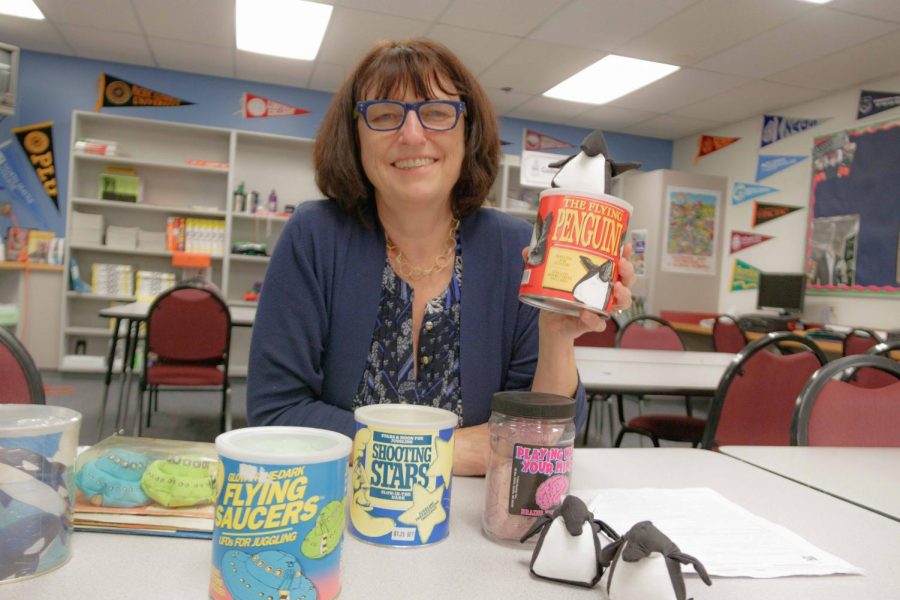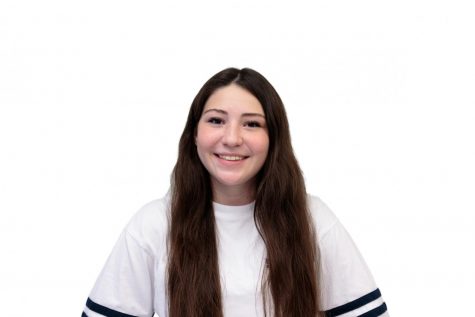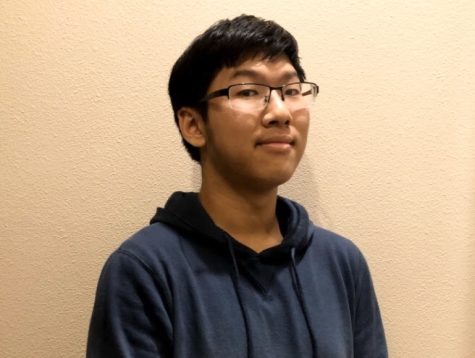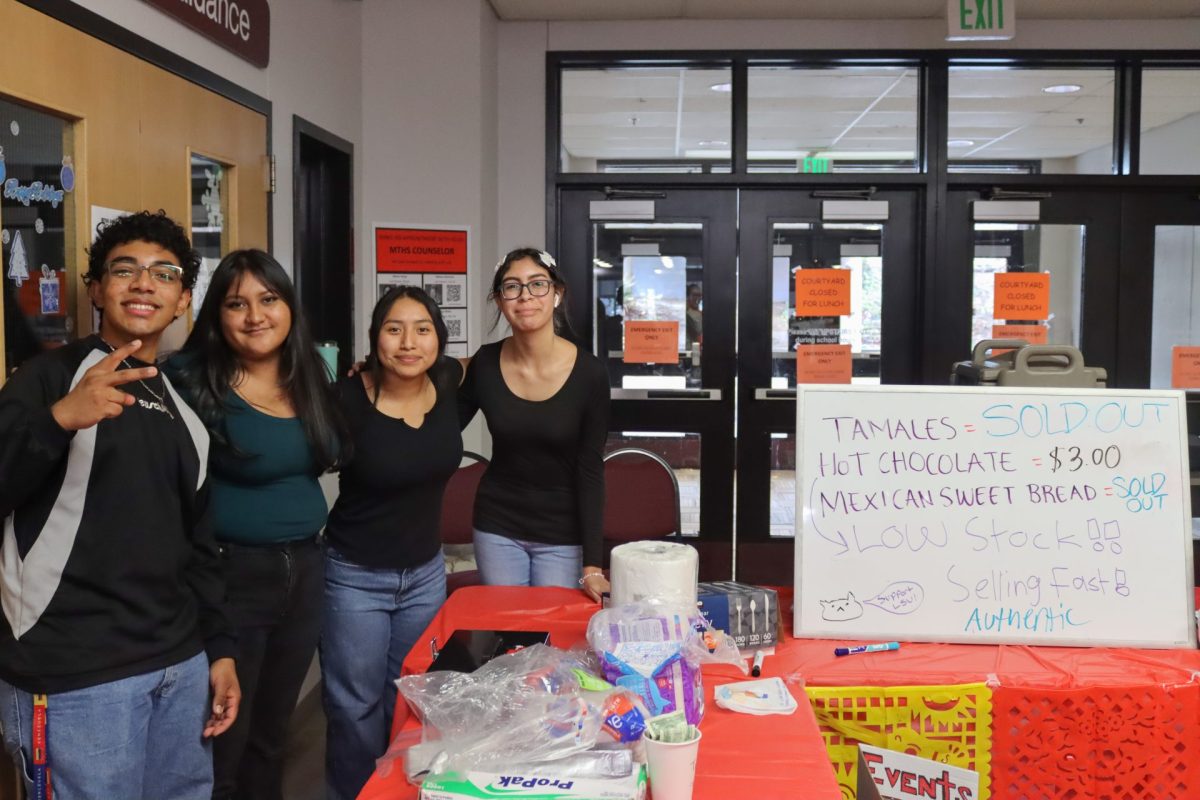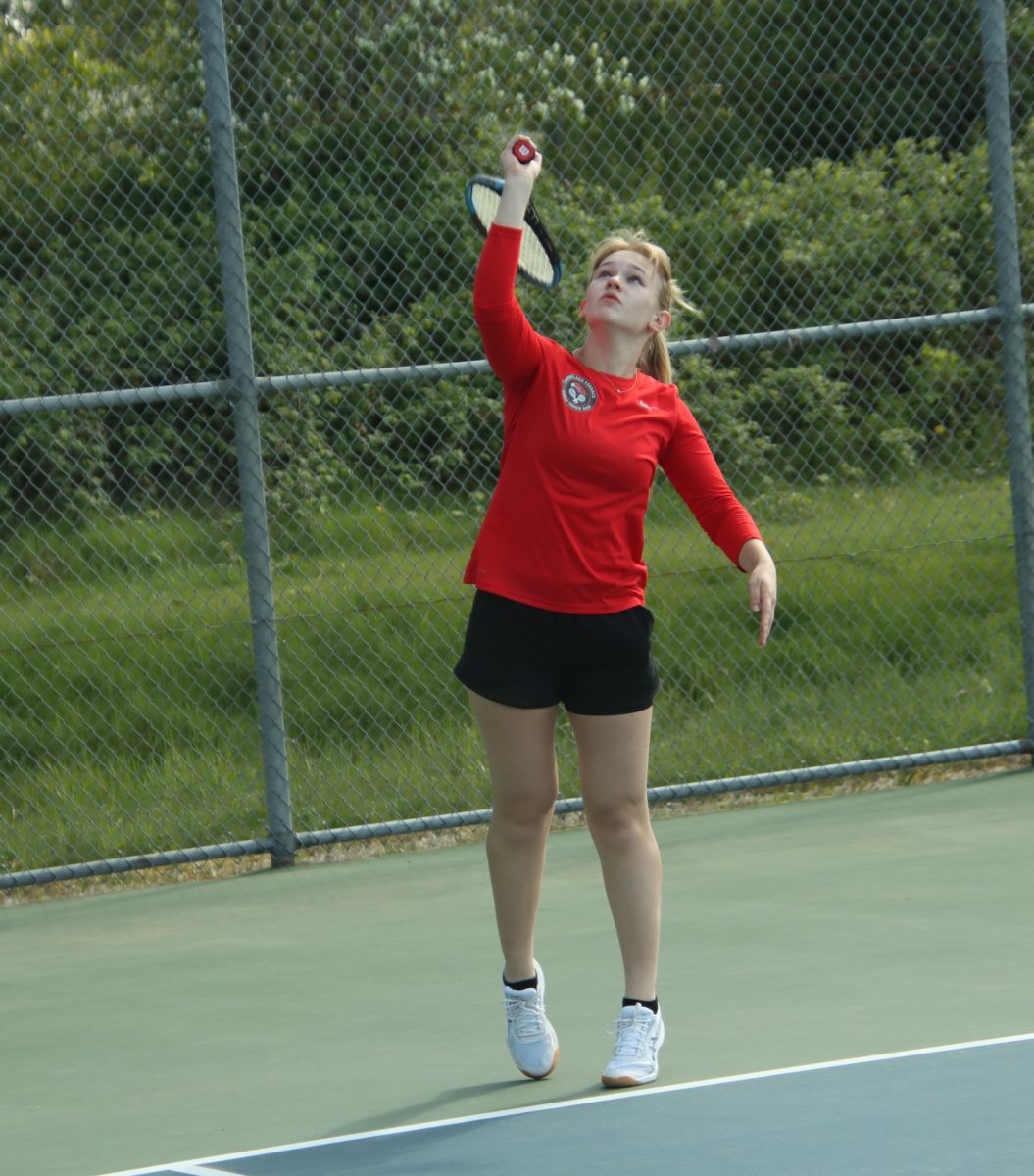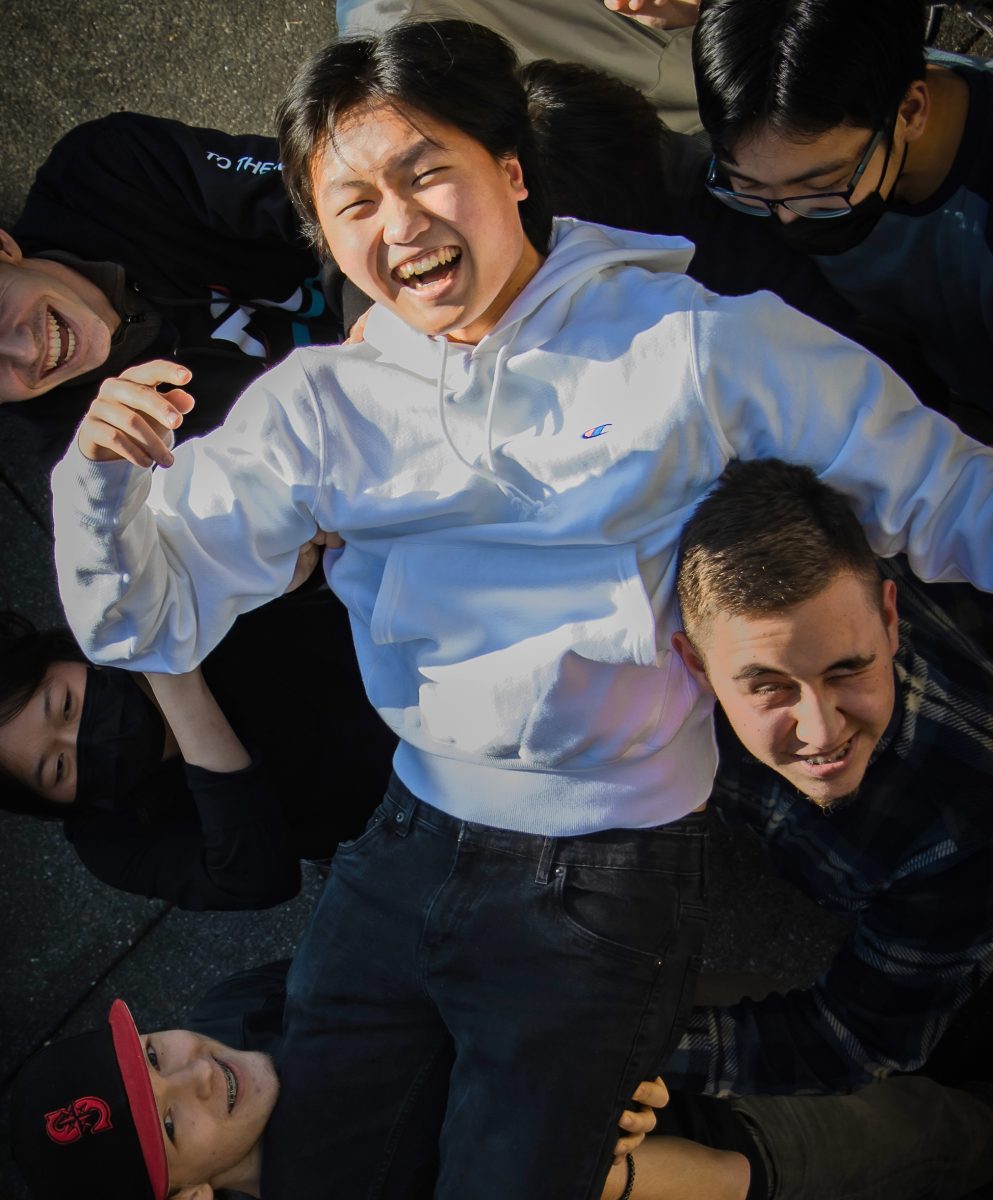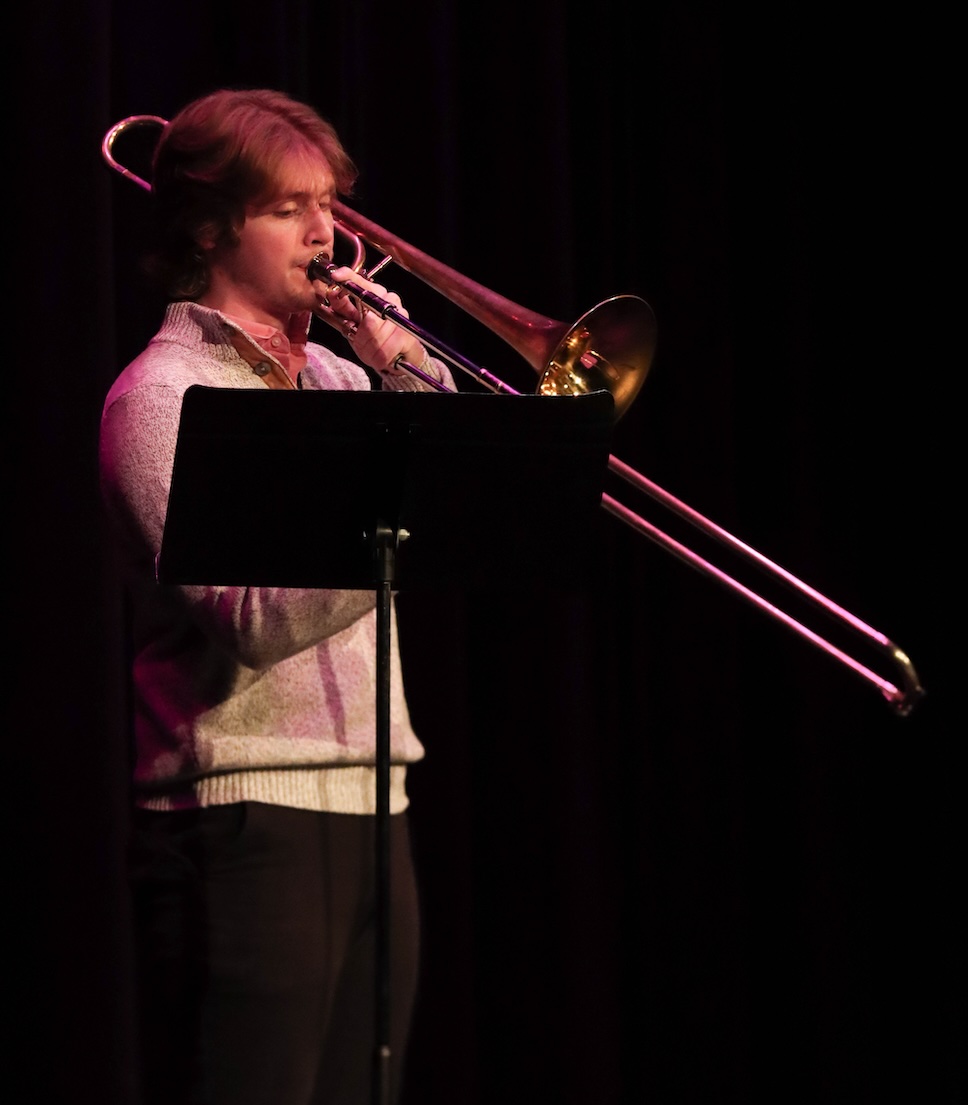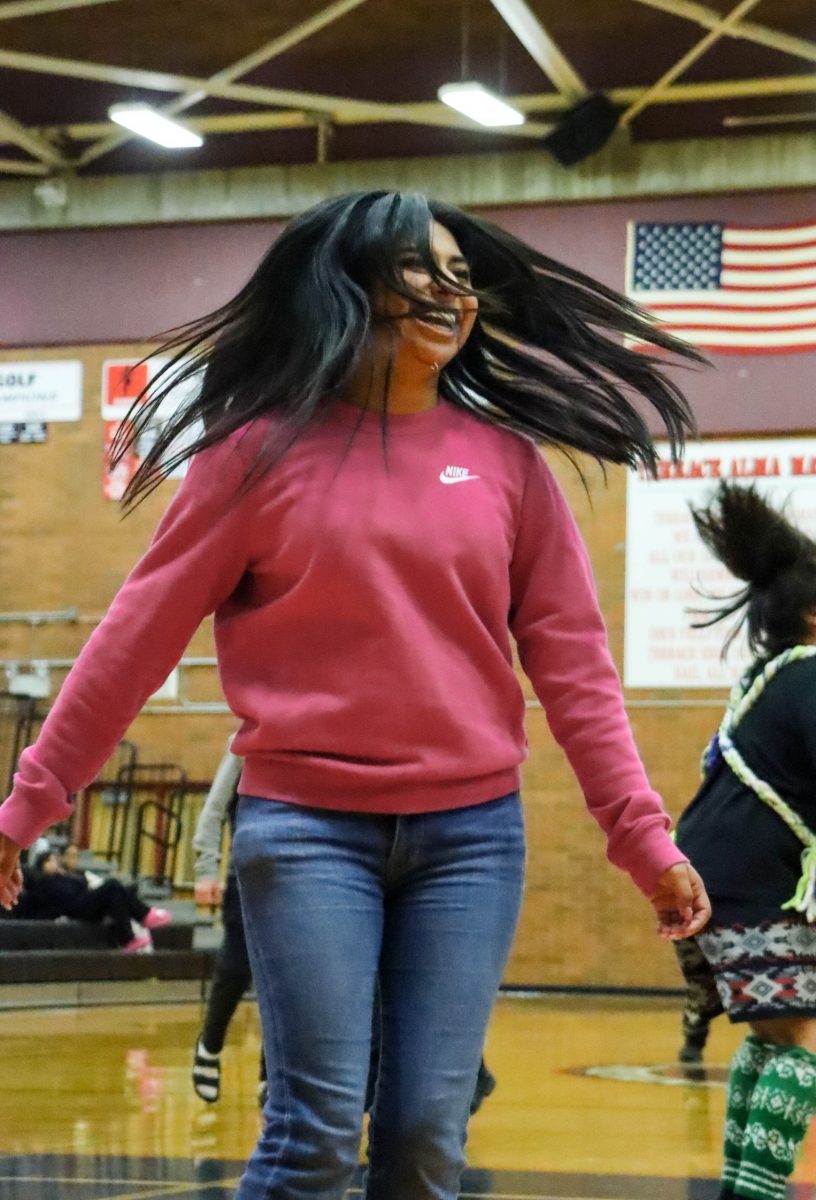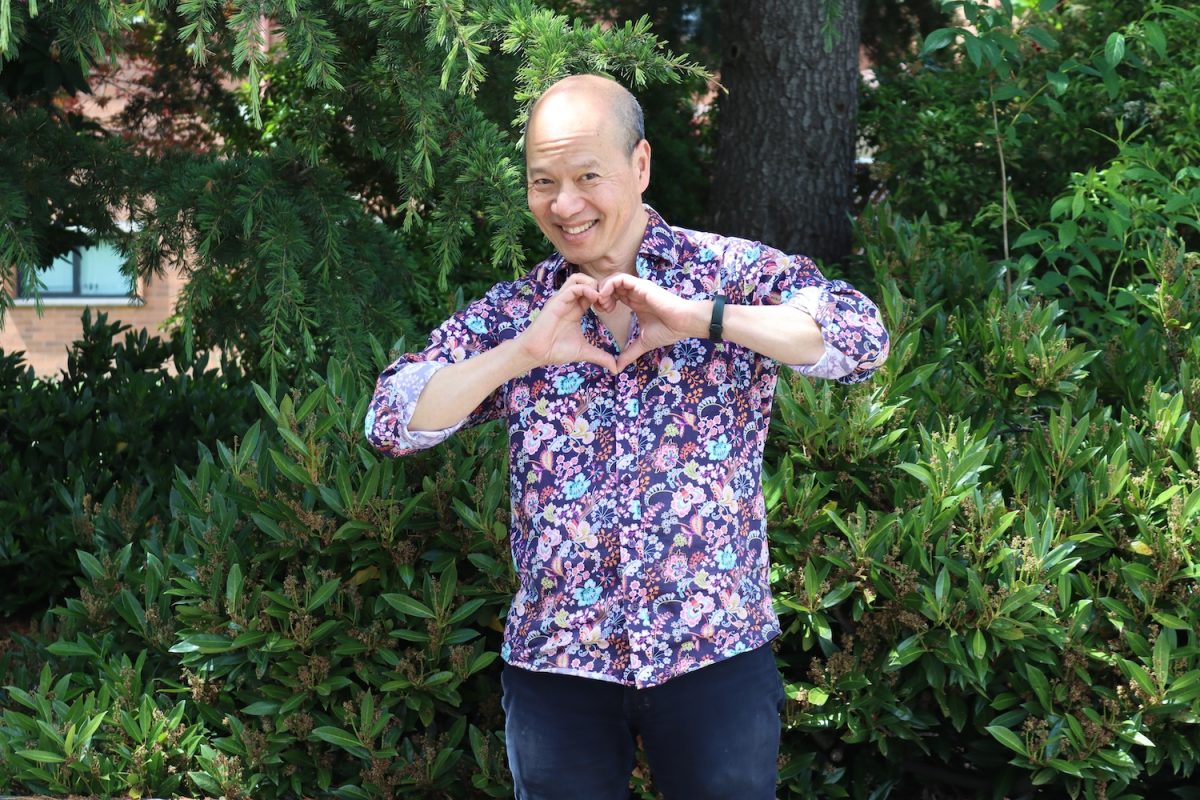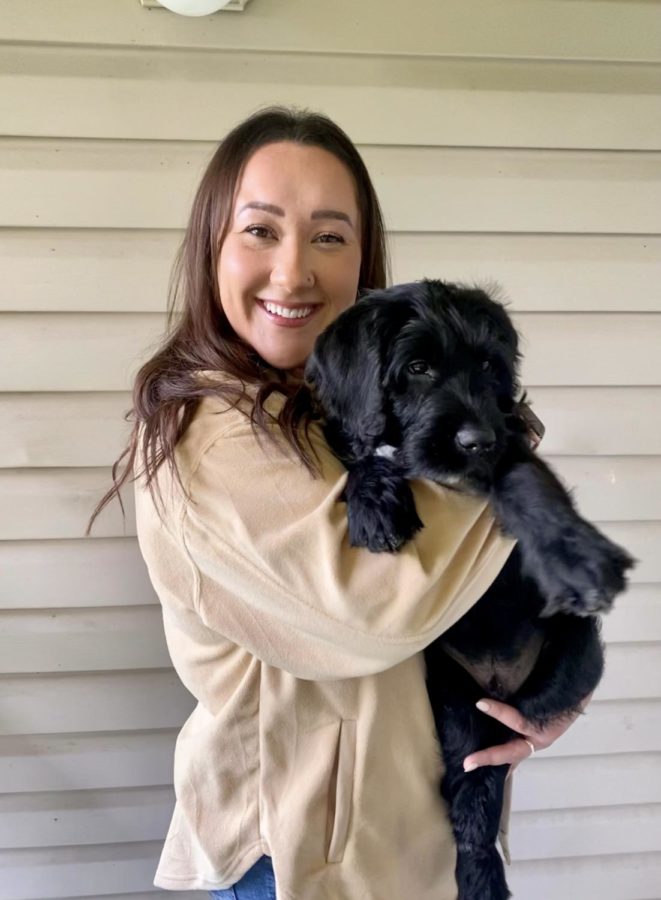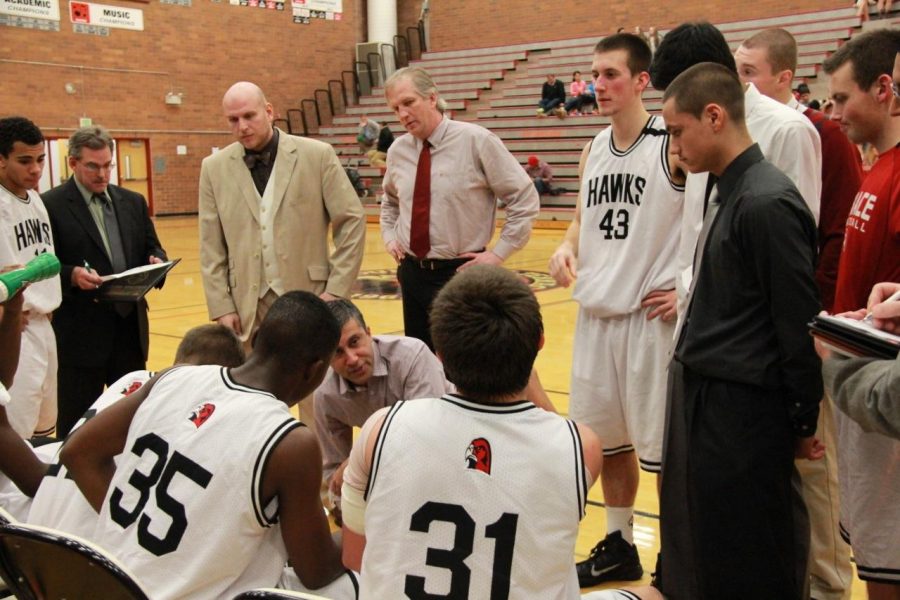The story of the Flying Penguinis
At just 12 years old, Career Specialist Barb Brister received her first sewing machine as well as started working her first job—picking strawberries. Brister earned money through her work for the first time and was able to go shop freely to suit her desires. From print shops to fabric stores, Brister held many positions at various companies until she was encouraged to start a business of her own in 1981.
Her husband at the time was learning how to juggle when she developed her first soon-to-be product: The Flying Penguinis.
“We taught the penguins how to fly— because penguins don’t fly, except for here they do,” Brister said. The product came as a set of three penguins with instructions on juggling.
“I call them success symbols because most people think it’s really hard to juggle and so this is kind of a symbol of overcoming a seemingly impossible goal. But once they break it down into step by step, then you can learn to juggle, and it’s not so hard and it’s not impossible, it just looks difficult because you think you have three things in the air at one time but you really don’t,” Brister said.
She made a dozen sets and took them down to Pike Place Market in October 1981, where a business called The Elements of Northwest Living (ENL) took the toy as “consignment,” meaning Brister kept the ownership of the product and would be paid 60 percent of the sale price. “It takes the risk out of them trying something new,” she explained, because if they didn’t sell, Brister would simply take the toys back.
A week later she received a call that the toys had sold out and people wanted more. ENL wanted to switch to wholesale and eventually were ordering from Brister regularly. As Brister found more companies to sell to, the business became known as “Chasley, Inc.,” named after her husband at the time who inspired the first product.
Chasley, Inc. developed different juggling toys like alien spaceships, bats and brains.
ENL, the company that first purchased from Brister, acted as mentors and taught Brister about retail business, including the logistics of using sales representatives.
Chasley, Inc. hired sales representatives and rented a warehouse space in Lake City, Seattle, moving from Brister’s home basement as to not bother the neighbors. Chasley, Inc. decided to rent space outside of home once UPS trucks were coming everyday with supply deliveries, according to Brister.
“It just felt like fun, I felt like I was living the American Dream the whole time,” Brister said.
There were at least seven employees working for Chasley, Inc. for the next 15 years. In addition to these employees, Chasley, Inc. used “cottage industry” independent contractors who would sew the cut pieces together. Most of these contractors were immigrants from Laos, a Southeast Asian country. Brister said she had read articles in the news about the U.S. funding for Asian refugees being cut, and people needed to find work sooner. She then found a family from the country who also spoke English and acted as representatives for Chasley, Inc. to distribute the materials to be sewn to non-English speaking immigrants.
“It was really kind of unique and wonderful. I could help them and they could work without having to navigate the work world otherwise and not learn to speak English. [For] some of those it was really helpful to get settled in here, so that felt good,” Brister said.
The flying Penguinis sought trademark in 1984 and were granted trademark rights in 1991.
The business ended in 1998, as profit had decreased, and since then the trademark rights have expired.
“We always said if it stops being fun, we’ll go get real jobs. It stops being fun when it stops making money— it becomes very stressful,” Brister said.
Brister wonders if the business would work now in the world of prevalent internet presence. To have the world as the audience to advertise to could potentially make the business successful again, but Brister has a job at MTHS’ Career Center now.
Over the past summer, Brister wanted to get the toys into the Museum of History and Industry. She wrote them a letter and they wrote back, saying they’d love to have them.
“They will be somewhere forever after I’m gone, the Flying Penguinis will still be documented in the museum,” Brister said.
The museum chronicles the world of industry and business in the Seattle and greater Pacific Northwest area from restaurants like Starbucks to technology companies like Microsoft and Amazon to products like the slinky and Pictionary. The museum only has about 2 percent of their collection on display while the remainder lies in storage.
“It could sit in their warehouse a long time but at least it’ll be there,” Brister said.
Brister and the Career Center
Before entering the business world, Brister attended Western Washington University and graduated with a degree in Home Economics.
“It gave me a good skill set just in general [and] prepared me for a lot of different jobs,” Brister said.
She was the first person in her family to graduate from college, so she can relate to the struggles many high school students face today as first-generation college students and aims to help them succeed by guiding them along the way in their college application process. As Career Specialist she serves to help all students with various forms of post high school plans.
Brister was fascinated with art, but was discouraged to pursue it because she didn’t know how she would support herself financially. Despite having that mentality, she encourages art students to continue onwards with their passions.“There are places where one can make a living, being a ‘Fine Artist’ is probably the most challenging but if one has a passion and talent for it, they should by all means explore it as far as possible. For them, it’s not just what they like to do, it crosses over into who they are,” Brister said.
In February of 2005, Brister starting working at MTHS in the Fines Office. When the Career Specialist at the time moved on to a different school, Brister recalls the counselors and counseling office secretary Kim Runkel encouraging her to apply for the position.
“I’ve worked my whole life and so I brought a lot of experience to the position and had a lot of different perspectives,” Brister said.
Brister now applies her wide breadth of experience to help guide kids in deciding what they want to do. From going into business to going to college, or even pursuing unique trades like sewing, she feels she can help all students get where they want to be.
As part of her job, Brister arranges college representative visits, field trips, helps kids with scholarships, decide what they want to do and where they want to get their education. Brister is the Naviance coordinator along with counselor Tanya Benvenuti. Brister encourages students to use Naviance as a resource for career interests and Career Center events.
She also helps with the High School and Beyond planning that’s monitored by the counselors. According to Brister, this helps students figure out who they are, what they want to do and how they’re going to “get there.”
Brister believes there is never enough preparation for post high school, so she wants more traffic in the Career Center and more opportunities for all students. Lunch and PASS are both times Brister welcomes students to drop by.
Brister said her current job “means something [to students],” as opposed to her other jobs that didn’t affect others in the same way.
“This is helping kids with their future and it’s really exciting to think about the places they’ll go and the things they’ll accomplish and you’re just a little piece helping them along the way that maybe takes away some of the stress and some of the stumbling blocks to it,” she said.
What’s new this year in the Career Center?
The Association for Career and Technical Education (ACTE) is doing a lot to educate students about options other than college; apprenticeships, intradistrict classes and more.
Brister is introducing Future Fridays, intentional about helping all students make a plan for their future. Some of the planned fridays include career exploration, college applications, essays and scholarships. There will be an ACTE speaker presenting on the first Friday of every month. One Friday will be preparing for the job fair at Edmonds-Woodway High School, done for first time last year, which will involve interview preparation, preparing resumes and more. The jobs showcased at the fair are mostly part time and/or summer work.
In addition, there have been more college visits to our school this year because of sign ups through Naviance. Brister wants more students to come to college visits as a way of getting information personally.
“Even if it’s a college you don’t think you’ll go to, it’s a good comparison to others you do think you want to go to. And you might surprise yourself and learn something that’s on your radar that wasn’t there before. I think it’s really good to reach outside your comfort zone,” Brister added.
Brister hopes students to understand the benefits of Naviance lessons, activities and career planning that will support them in the long run.
Because the future isn’t always certain, Brister lives by a simple philosophy when it comes to making plans: 1) Know it’s gonna change 2) The more information you gather, the better your decision is going to be.
For more information on the job fair and other counseling center activities, students can check Naviance or their emails for messages from from the Career Center.
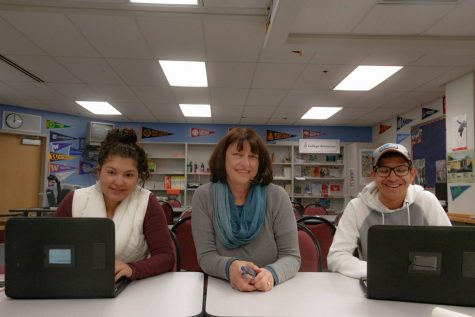
Jonathan Kwong
As seniors Jazmyn Burn-Seipp and Kenneth Morris-Fagan continue their last year of high school, Barb Brister enthusiastically works with them to plan their future beyond high school.


